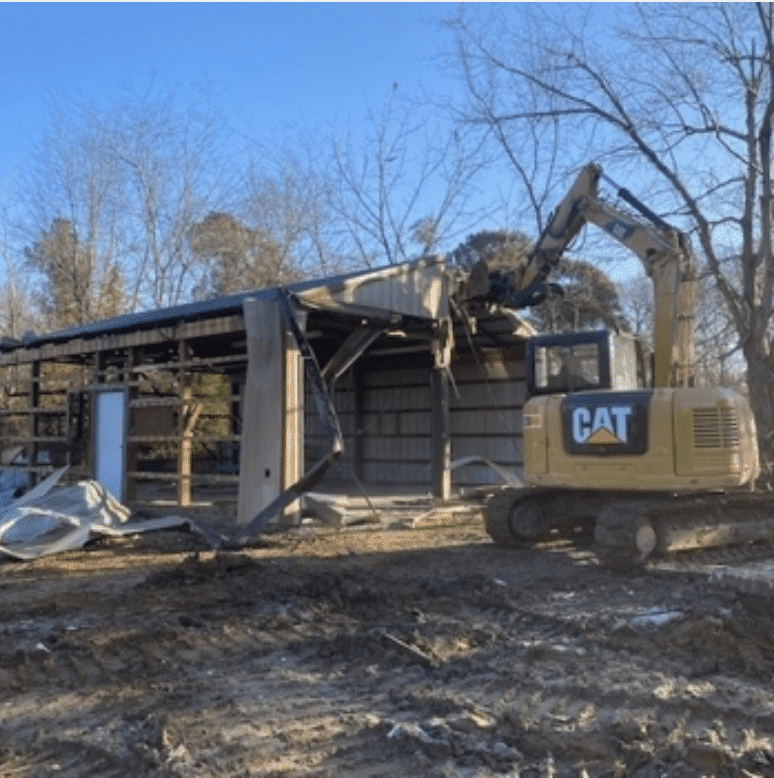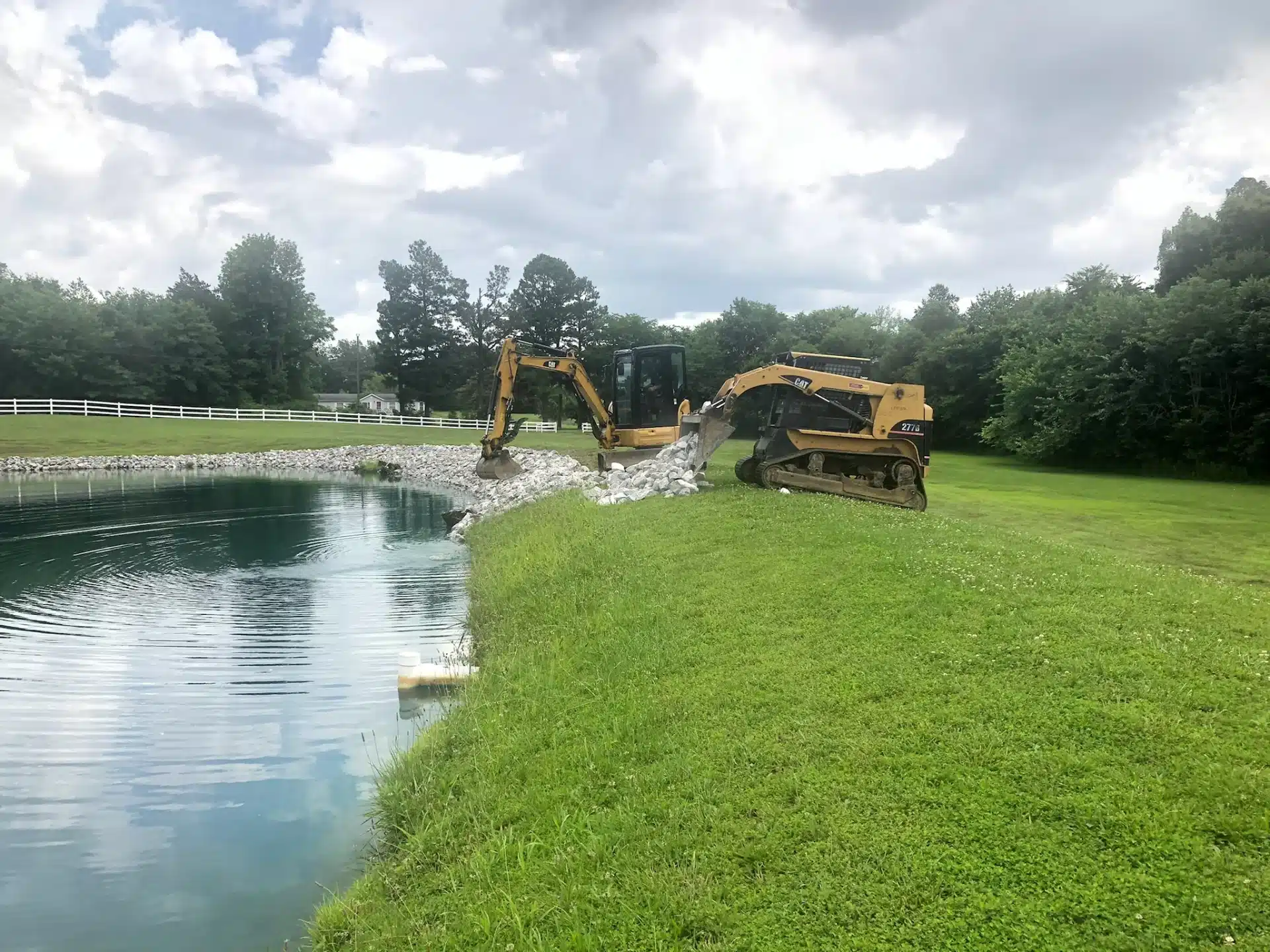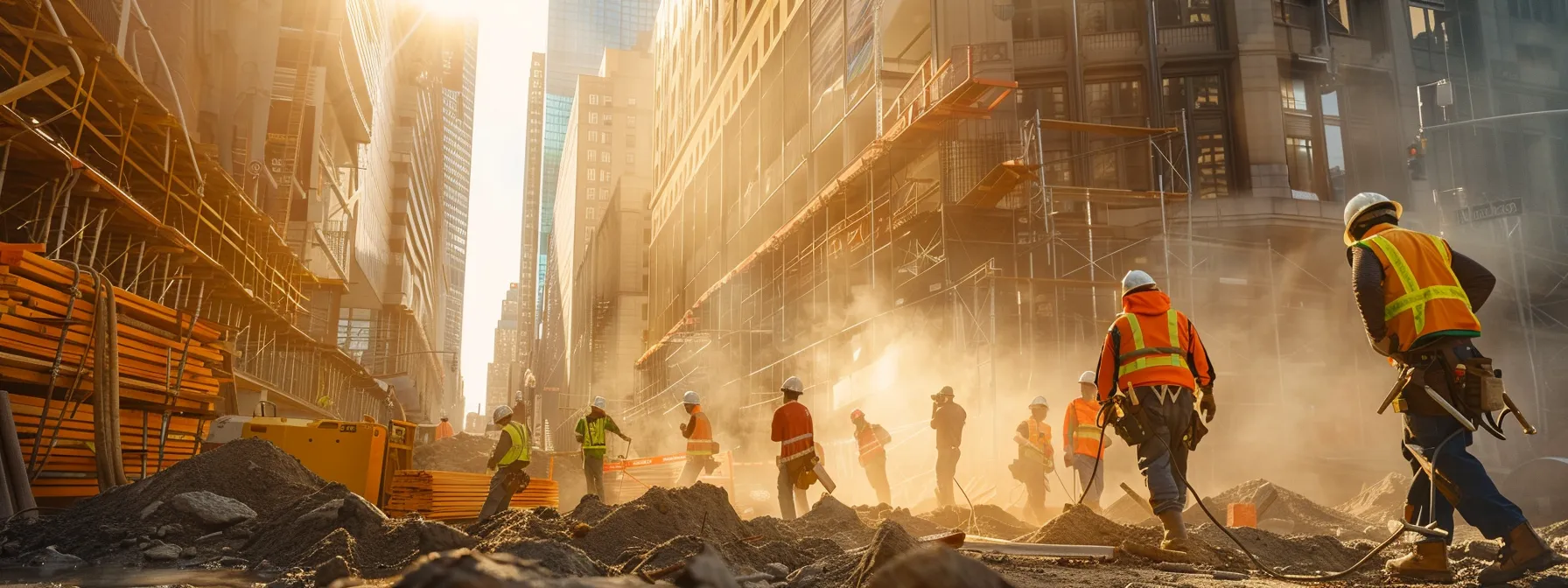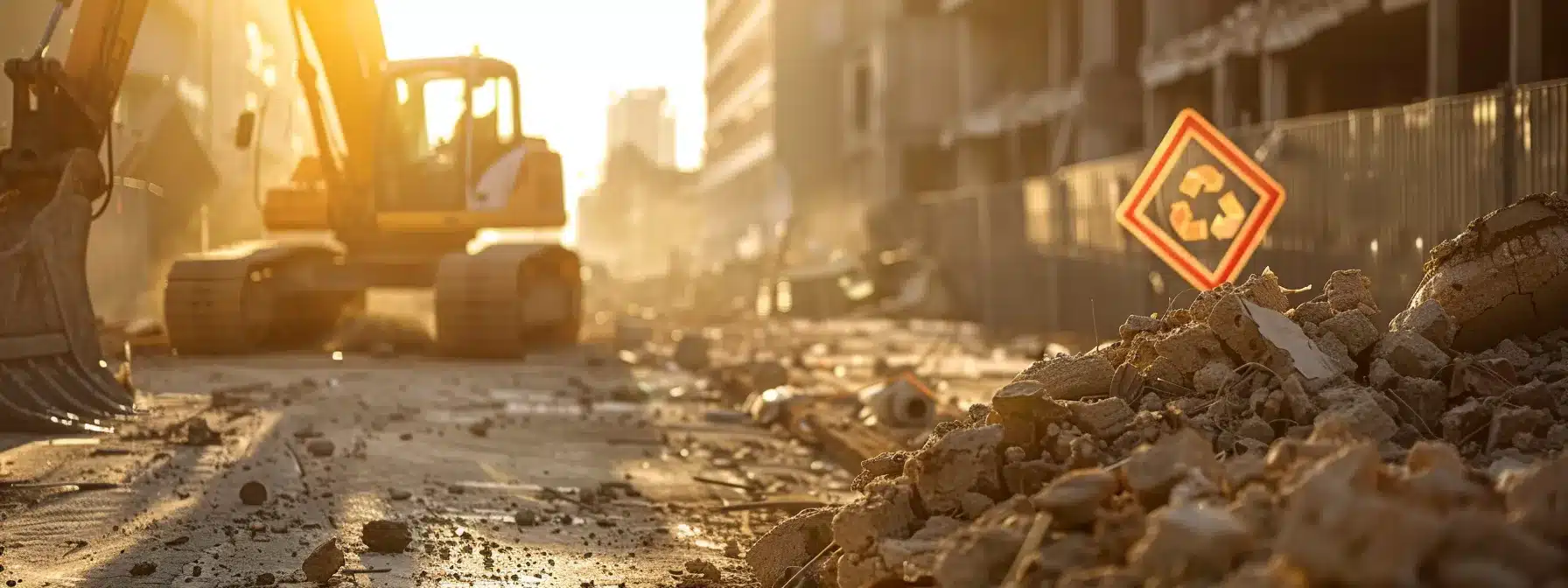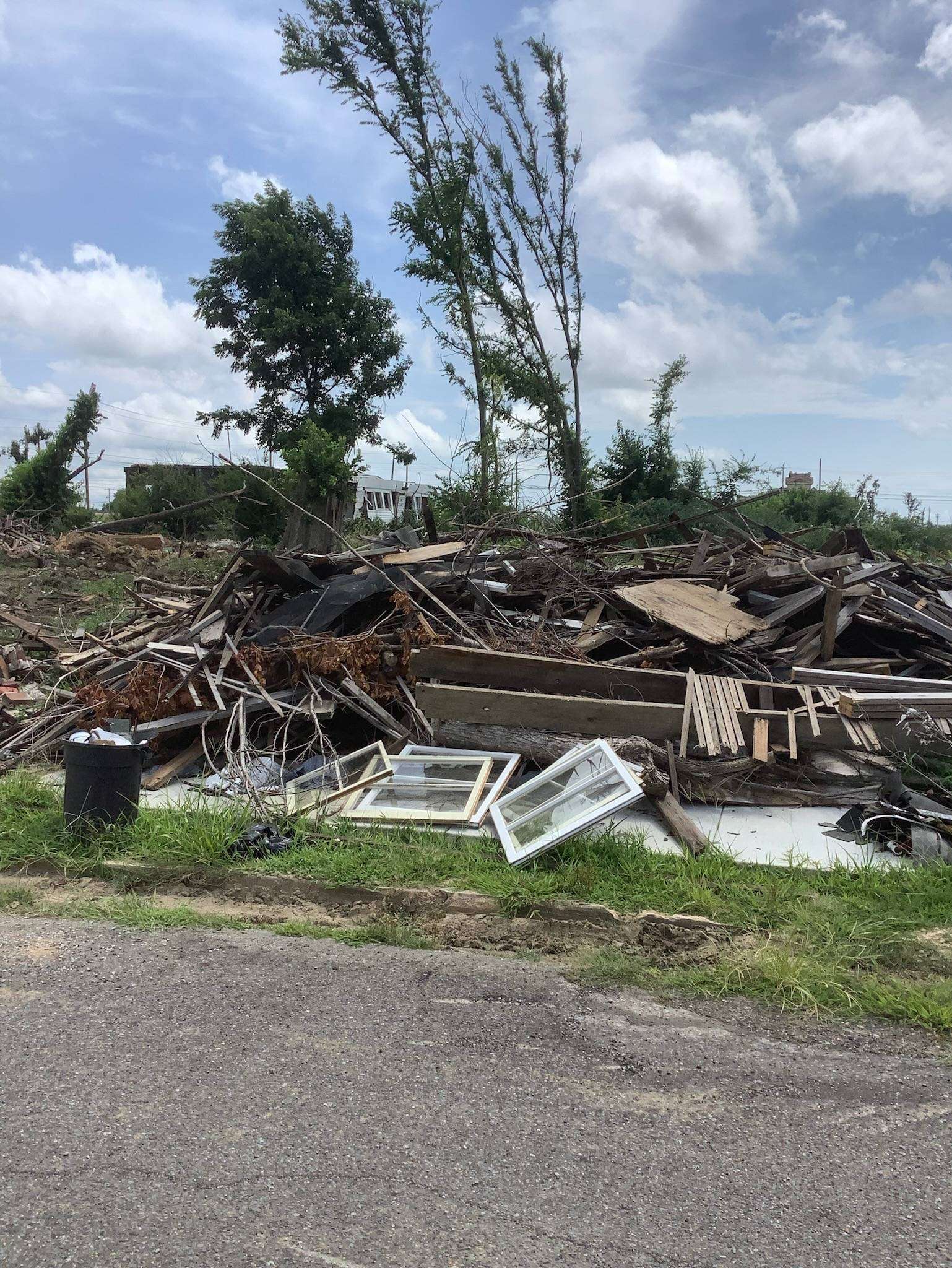Demolition projects carry inherent risks, making safety a top priority to prevent injuries and accidents. Proper management of these risks is crucial for protecting workers’ health and the surrounding environment. From assessing structural integrity to planning for safe roof removal, every aspect of demolition requires careful consideration. In this article, you’ll discover the essential steps to ensure a safe demolition process, from risk assessments to emergency planning.
Key Takeaways
- Thorough risk assessments are crucial for identifying and mitigating hazards in demolition projects
- Pre-demolition planning helps prevent accidents and ensures a safer work environment
- Proper safety equipment and regular maintenance are essential for protecting demolition crews
- Continuous training and education foster a strong safety culture in demolition work
- A comprehensive emergency response plan is vital for handling potential accidents and hazards
Understanding the Basics of Demolition Safety
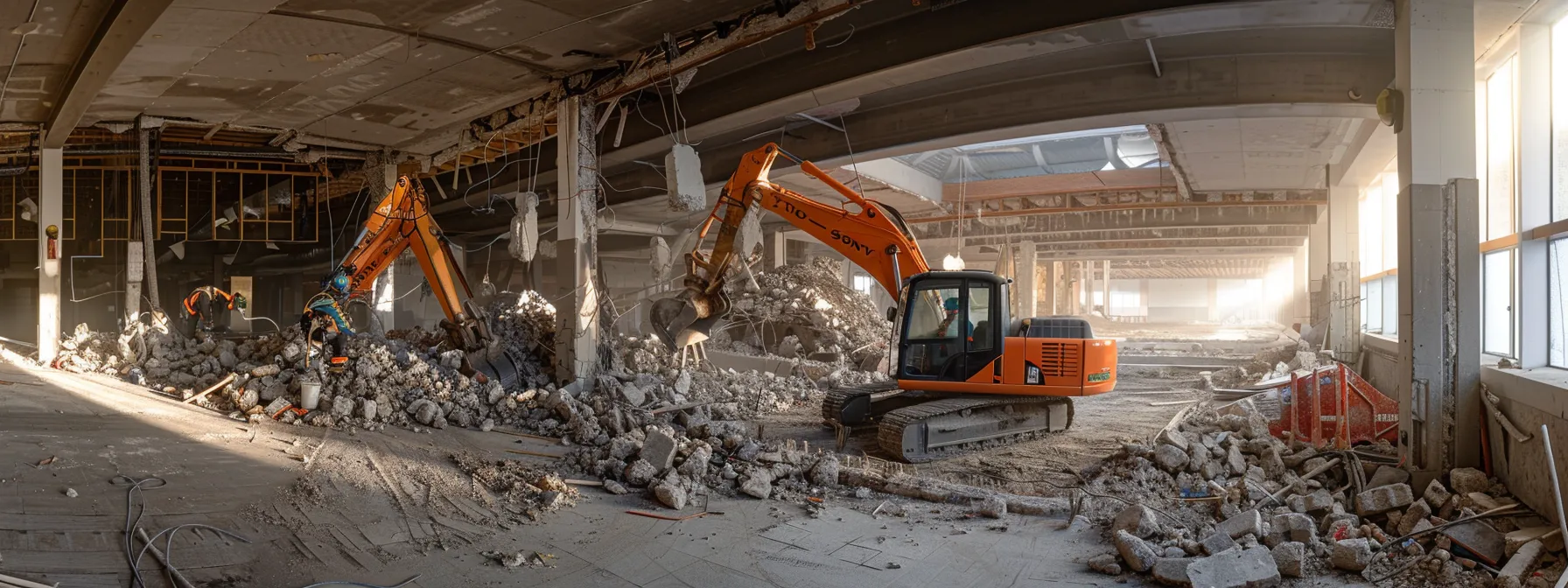
Demolition safety hinges on thorough project management and comprehensive risk assessments. You must understand the unique hazards associated with demolition projects, including potential asbestos exposure and structural instability. Pre-demolition planning plays a crucial role in identifying and mitigating these risks before work begins. By carefully evaluating the site and implementing proper safety protocols, you can significantly reduce the likelihood of accidents and ensure a safer demolition process for all involved.
Identifying Hazards Specific to Demolition Projects
You need to recognize the unique hazards in demolition projects to ensure occupational safety and health. These include potential exposure to harmful substances like lead and asbestos, as well as structural instability that can lead to collapses. You must also consider environmental factors such as water contamination and dust control.
To address these risks, you should conduct thorough site assessments and implement appropriate safety measures. This includes providing workers with proper personal protective equipment, securing adequate insurance coverage, and developing comprehensive emergency response plans. By identifying and mitigating these hazards, you can create a safer work environment for all involved in the demolition process.
The Role of Pre-Demolition Planning in Preventing Accidents
Pre-demolition planning is crucial for preventing accidents in demolition projects. You must conduct a thorough risk assessment and audit of the site, identifying potential hazards such as unstable structures, hazardous materials, and environmental impacts. This process helps you develop a comprehensive safety plan that addresses all potential risks.
Your pre-demolition plan should include strategies for protecting workers, nearby structures, and the natural environment. Consider factors such as the use of explosives, employment of specialized equipment, and methods for controlling dust and debris. By carefully planning each step of the demolition process, you significantly reduce the likelihood of accidents and ensure a safer work environment for all involved.
Key components of a pre-demolition safety plan:
| Component | Description |
|---|---|
| Site Assessment | Evaluate structural integrity and identify hazardous materials |
| Risk Mitigation Strategies | Develop plans to address identified risks |
| Safety Equipment | Determine necessary personal protective equipment |
| Emergency Procedures | Establish protocols for potential emergencies |
Conducting a Comprehensive Risk Assessment

Conducting a comprehensive risk assessment is crucial for ensuring safety in demolition projects. You must carefully evaluate potential hazards related to debris, dust, and machine operations while adhering to Occupational Safety and Health Administration guidelines. By gathering and analyzing information about the site, you can develop effective strategies to mitigate risks and protect workers. This process involves a step-by-step approach to identify and address potential dangers, followed by implementing targeted safety measures to create a secure work environment.
Step-by-Step Guide to Evaluating Potential Risks
Begin your risk assessment by surveying the demolition site for potential hazards like unstable structures, hazardous materials, and electrical wires. Evaluate noise levels and identify areas where excessive construction noise might pose risks to workers or nearby residents. Assess the site’s waste management plan to ensure proper disposal of demolition debris and potentially harmful materials.
Next, analyze the safety measures currently in place and determine if they adequately address the identified risks. Consider factors such as worker training, personal protective equipment, and emergency response procedures. Develop a comprehensive safety plan that addresses all potential hazards and outlines specific steps to mitigate risks throughout the demolition process.
Implementing Risk Mitigation Strategies Effectively
To implement risk mitigation strategies effectively, you must prioritize structural integrity assessments, particularly for chimneys and other tall elements. Use data-driven risk management techniques to identify potential hazards and develop targeted solutions. This approach allows you to allocate resources efficiently and address the most critical safety concerns first.
When planning crane operations, you need to carefully consider factors such as wind conditions, load capacities, and proximity to existing structures. By integrating these considerations into your overall risk mitigation strategy, you can significantly reduce the likelihood of accidents and ensure a safer demolition process for all involved.
The Critical Role of Safety Equipment in Demolition

Safety equipment plays a vital role in protecting demolition crews from various hazards, including extreme heat and potential exposure to disease-causing agents. As an engineer overseeing demolition projects, you must ensure that your team has access to and properly uses essential gear. Regular inspections and maintenance of this equipment are crucial for its effectiveness. Additionally, proper waste management practices are necessary to minimize risks associated with hazardous materials. By prioritizing safety equipment and adhering to strict maintenance protocols, you can significantly reduce the likelihood of accidents and create a safer work environment for your demolition crew.
Essential Gear Every Demolition Crew Must Have
You must equip your demolition crew with essential safety gear to protect against hazards like electricity, fire, and manual handling of loads. Provide hard hats, safety glasses, steel-toed boots, and high-visibility vests as standard personal protective equipment. Ensure workers have proper respiratory protection, such as dust masks or respirators, to guard against airborne particles.
Equip your team with specialized tools designed for demolition work, including pry bars, sledgehammers, and reciprocating saws. Provide fall protection equipment for work at heights and hearing protection for noisy environments. While not safety equipment per se, having a lawyer on retainer can help address any legal issues that may arise during demolition projects.
Regular Maintenance and Checks for Safety Equipment
You must perform regular maintenance and checks on safety equipment to ensure its reliability during building implosions and other demolition activities. Conduct thorough evaluations of all gear, including ladders, harnesses, and protective clothing, following guidelines set by OSHA (Occupational Safety and Health Administration). This proactive approach helps prevent equipment failures that could endanger your workers and the surrounding community.
Implement a systematic inspection schedule for all safety equipment, documenting each check and addressing any issues promptly. Train your team to recognize signs of wear and tear, encouraging them to report concerns immediately. By prioritizing equipment maintenance, you demonstrate your commitment to safety and create a culture of vigilance among your demolition crew.
Training Your Team for Safe Demolition Practices
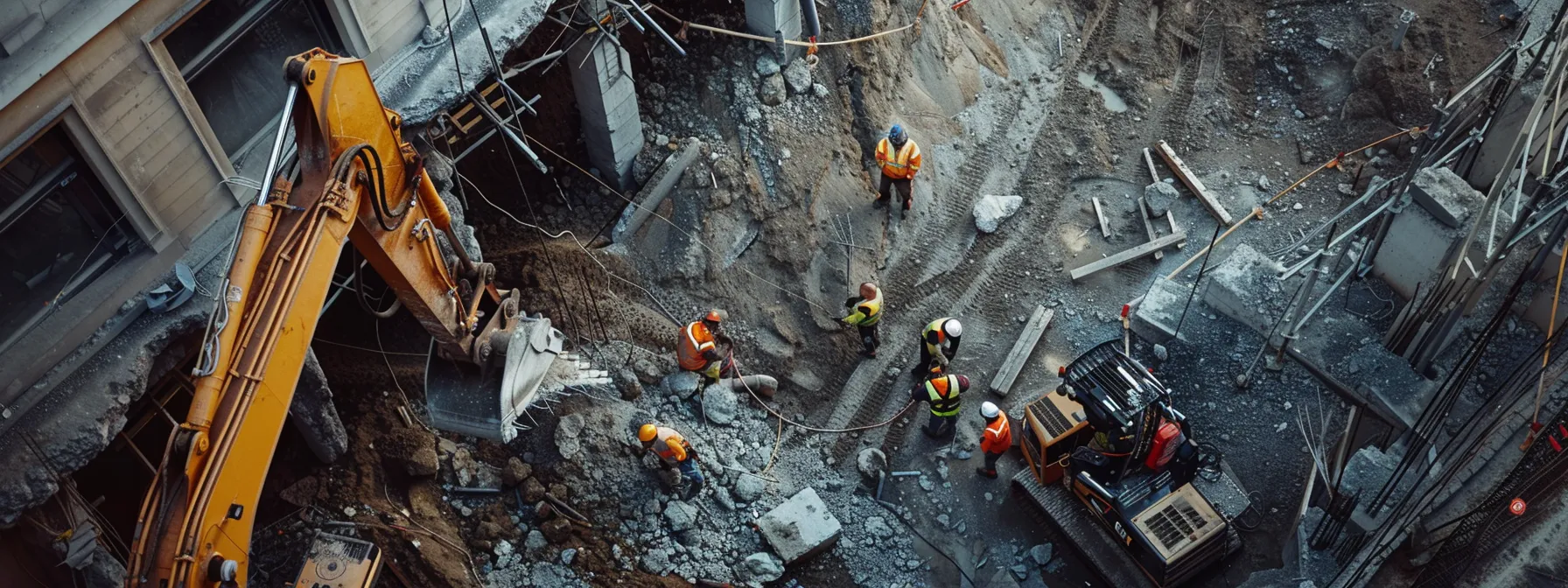
Training your team in safe demolition practices is crucial for preventing construction accidents and reducing workplace injuries. A well-trained crew is better equipped to identify potential hazards, implement safety protocols, and respond effectively to emergencies during building demolition. By investing in comprehensive training programs and fostering a culture of continuous education, you significantly reduce the risk of accidents and create a safer work environment. Effective training not only protects your workers but also enhances overall project efficiency and compliance with safety regulations.
Key Components of an Effective Training Program
You must include vibration awareness in your training program, as excessive vibration can lead to structural instability and worker health issues. Conduct research on the latest safety techniques and integrate this knowledge into your curriculum, ensuring your team stays up-to-date with industry best practices. Incorporate lessons learned from demolition projects in the United States to provide a comprehensive understanding of nationwide safety standards.
Your training program should teach fault tree analysis, enabling workers to identify potential failure points and mitigate risks effectively. Emphasize the importance of continuous learning and provide opportunities for team members to expand their expertise through workshops, seminars, and hands-on exercises. By focusing on these key components, you’ll develop a well-rounded training program that equips your team with the skills needed to maintain a safe demolition environment.
Continuous Education and Its Impact on Safety Culture
You must prioritize continuous education to foster a strong safety culture in demolition projects. Regular training on fire safety, pollution control, and concrete handling techniques keeps your team updated on best practices. By investing in ongoing education, you reduce costs associated with accidents and improve overall project efficiency.
Implement a comprehensive safety checklist and conduct frequent refresher courses to reinforce safe demolition practices. This approach ensures your team remains vigilant and prepared to handle various hazards encountered on job sites. Continuous education not only enhances worker safety but also promotes a culture of responsibility and professionalism within your organization.
- Conduct regular safety workshops
- Provide hands-on training for new equipment
- Offer specialized courses on hazardous material handling
- Encourage team members to obtain relevant certifications
- Share lessons learned from past projects
Emergency Response Planning for Demolition Sites

You must develop a comprehensive emergency response plan for your demolition site to ensure the safety of workers and nearby residents. Include procedures for dealing with scaffold collapses, excavator accidents, and potential fires that could lead to burns. Your plan should address how to assist workers with disabilities during emergencies, ensuring their safe evacuation.
Designate clear roles and responsibilities for your team members in case of an emergency. Train your staff on proper use of fire extinguishers, first aid techniques, and evacuation procedures. Conduct regular drills to reduce uncertainty and improve response times during real emergencies.
Establish communication protocols with local emergency services and nearby businesses. Provide them with site layouts and potential hazard information to facilitate rapid response. Keep emergency contact information readily available and update it regularly to ensure accuracy.
Implement a system for monitoring weather conditions that could affect demolition activities. Be prepared to halt operations and secure the site in case of severe weather. Regularly review and update your emergency response plan to account for changes in site conditions or newly identified risks.
Contact Supreme Enterprises Demolition Team for a Free Estimate

You can trust Supreme Enterprises to prioritize safety in your demolition project. Our team conducts thorough risk assessments, addressing potential hazards associated with heavy equipment operation and plant removal. We implement comprehensive safety measures, including fall arrest systems, to protect our workers and your property.
By choosing Supreme Enterprises, you minimize the risk of accidents and potential pain and suffering. Our skilled technicians are trained in first aid and emergency response, ensuring quick action in case of unforeseen incidents. We maintain rigorous safety standards throughout the demolition process, from initial assessment to final cleanup.
Contact Supreme Enterprises today for a free estimate on your demolition project. Our experienced team will evaluate your site, identify potential risks, and provide a detailed plan that prioritizes safety and efficiency. We’ll work with you to address any concerns and ensure a smooth, hazard-free demolition process.
Don’t leave your demolition project to chance. Let Supreme Enterprises’ expertise in risk assessment and safety management give you peace of mind. Reach out now to schedule your free estimate and take the first step towards a safe, successful demolition.
Frequently Asked Questions
What are the key components of a demolition safety plan?
A comprehensive demolition safety plan includes hazard identification, risk assessment, personal protective equipment requirements, site security measures, debris management procedures, and emergency response protocols. It also outlines proper equipment operation, worker training, and compliance with local regulations to ensure a safe demolition process.
How often should risk assessments be conducted for demolition projects?
Risk assessments for demolition projects should be conducted regularly, typically before work begins and whenever significant changes occur. Factors like project scope, site conditions, and potential hazards may require more frequent assessments. It’s crucial to review and update assessments throughout the project to ensure ongoing safety.
What essential safety equipment is required for demolition work?
For demolition work, essential safety equipment includes hard hats, safety glasses, respiratory protection, steel-toed boots, hearing protection, and high-visibility clothing. Depending on the specific job, fall protection gear, gloves, and face shields may also be required to ensure worker safety.
How can workers be properly trained for safe demolition practices?
Proper training for safe demolition practices includes comprehensive safety courses, hands-on experience with equipment, and knowledge of hazardous materials handling. Workers should learn about structural integrity, proper protective gear usage, and emergency procedures. Regular safety briefings and updated certifications help maintain a culture of safety on demolition sites.
Why is an emergency response plan crucial for demolition sites?
An emergency response plan is vital for demolition sites to ensure worker safety, minimize risks, and comply with regulations. It outlines procedures for handling accidents, injuries, and unexpected hazards, enabling quick and effective reactions to potentially life-threatening situations during demolition work.
Conclusion
Safety in demolition hinges on thorough risk assessments, which identify potential hazards and guide the implementation of effective safety measures. Comprehensive evaluations of structural integrity, hazardous materials, and environmental impacts form the foundation of a robust safety plan. Proper training, essential safety equipment, and continuous education create a culture of vigilance among demolition crews. By prioritizing safety through meticulous planning and risk mitigation strategies, demolition projects can significantly reduce accidents, protect workers, and ensure successful outcomes.


